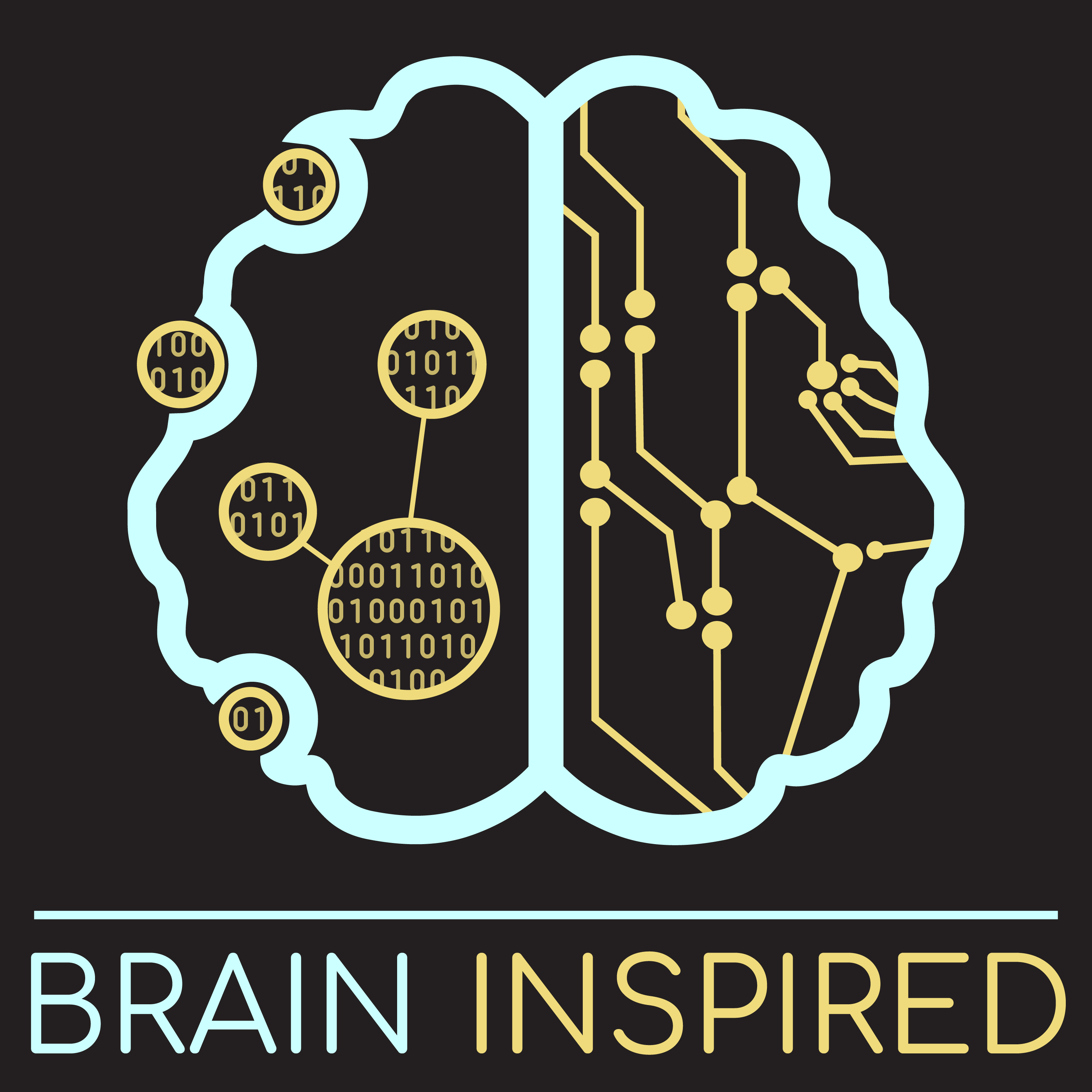BI 202 Eli Sennesh: Divide-and-Conquer to Predict
03 Jan 2025
1 HR 38 MINS
1:38:11
03 Jan 2025


…
Neuroscience and artificial intelligence work better together. Brain inspired is a celebration and exploration of the ideas driving our progress to understand intelligence. I interview experts about their work at the interface of neuroscience, artificial intelligence, cognitive science, philosophy, psychology, and more: the symbiosis of these overlapping fields, how they inform each other, where they differ, what the past brought us, and what the future brings. Topics include computational neuroscience, supervised machine learning, unsupervised learning, reinforcement learning, deep learning, convolutional and recurrent neural networks, decision-making science, AI agents, backpropagation, credit assignment, neuroengineering, neuromorphics, emergence, philosophy of mind, consciousness, general AI, spiking neural networks, data science, and a lot more. The podcast is not produced for a general audience. Instead, it aims to educate, challenge, inspire, and hopefully entertain those interested in learning more about neuroscience and AI.
Neuroscience and artificial intelligence work better together. Brain inspired is a celebration and exploration of the ideas driving our progress to understand intelligence. I interview experts about their work at the interface of neuroscience, artificial intelligence, cognitive science, philosophy, psychology, and more: the symbiosis of these overlapping fields, how they inform each other, where they differ, what the past brought us, and what the future brings. Topics include computational neuroscience, supervised machine learning, unsupervised learning, reinforcement learning, deep learning, convolutional and recurrent neural networks, decision-making science, AI agents, backpropagation, credit assignment, neuroengineering, neuromorphics, emergence, philosophy of mind, consciousness, general AI, spiking neural networks, data science, and a lot more. The podcast is not produced for a general audience. Instead, it aims to educate, challenge, inspire, and hopefully entertain those interested in learning more about neuroscience and AI.
Progress
Duration
Release Date
03 Jan 2025
1 HR 38 MINS
1:38:11
03 Jan 2025
18 Dec 2024
1 HR 37 MINS
1:37:22
18 Dec 2024
04 Dec 2024
1 HR 37 MINS
1:37:11
04 Dec 2024
26 Nov 2024
1 HR 49 MINS
1:49:07
26 Nov 2024
11 Nov 2024
1 HR 35 MINS
1:35:04
11 Nov 2024
25 Oct 2024
1 HR 29 MINS
1:29:31
25 Oct 2024
11 Oct 2024
1 HR 19 MINS
1:19:40
11 Oct 2024
08 Oct 2024
1 HR 17 MINS
1:17:05
08 Oct 2024
27 Sep 2024
1 HR 37 MINS
1:37:21
27 Sep 2024
11 Sep 2024
1 HR 32 MINS
1:32:41
11 Sep 2024
28 Aug 2024
1 HR 30 MINS
1:30:34
28 Aug 2024
15 Aug 2024
1 HR 27 MINS
1:27:51
15 Aug 2024
31 Jul 2024
1 HR 41 MINS
1:41:03
31 Jul 2024
29 Jun 2024
1 HR 27 MINS
1:27:19
29 Jun 2024
27 May 2024
1 HR 28 MINS
1:28:14
27 May 2024
20 Apr 2024
1 HR 03 MINS
1:03:35
20 Apr 2024
25 Mar 2024
1 HR 43 MINS
1:43:34
25 Mar 2024
06 Mar 2024
1 HR 44 MINS
1:44:50
06 Mar 2024
20 Feb 2024
1 HR 30 MINS
1:30:47
20 Feb 2024